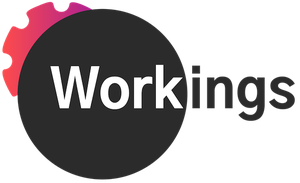But in an economy as diverse as ours, sweeping declarations about “the future of work” make no sense. The best approach for any given company depends on a host of variables, including the nature of the tasks at hand, the relevant talent market, the organization’s size and infrastructure, the needs of specific team members...and so on.
There is no right answer for all companies...not even for all professional services companies. Moreover, in most organizations, different work groups will likely need different arrangements. And no matter what the understanding is for a particular team at a given time, the way work actually gets done will continue to evolve as markets shift, organizations mature, new technologies emerge, and roles swap hands.
How then, in the face of such constant change, do we ground ourselves? I think the answer lies in meeting our most human needs, which unlike everything else, haven’t changed all that much.
A little over a decade ago, I had a pretty productive midlife crisis: in search of what makes work meaningful, I interviewed over 90 people and solicited essays from 80 more. That project, together with my own work experiences, led me to conclude that, in addition to making a living (obviously, the main reason most of us work), many of us also crave three other key things from our jobs: connection, flow, and wonder.
- Connection = real relationships with real people
- Flow = that glorious sense of total absorption in a task (coined by the late Mihály Csíkszentmihályi)
- Wonder = an appreciation, and a growing understanding, of the wider world
I’d like to suggest that no matter what shape our various work arrangements take in the future, we should aim not just to create financially sound enterprises but also to foster connection, flow, and wonder. These aren’t means to an end; they’re intrinsically worthwhile, and they’re how we can find...even at something as pedestrian as a job...what T.S. Eliot so elegantly called “the still point in the turning world.”
I hope this intuitively makes sense to many of you, but I can also appreciate that it probably sounds a bit woo-woo. (“Did she just bring T.S. Eliot into a MailChimp newsletter???”) So I’ll close with a concrete example of what, for me, was a near-perfect workday.
A few weeks ago, I got on a Teams call at about 10 a.m. with my colleague, Katelyn Reilly. Our plan was to collaborate on an important project, a document that needed to go deep (articulating many of our core values), remain grounded in rock-solid facts, and respect the privacy of various parties. We quickly realized that getting this document right was going to take total focus, some rigorous debate, and a lot of time. We didn’t hop in our cars and navigate Seattle’s traffic to be together...but we were together, for about seven solid hours. Throughout the day, we each stepped away from time to time...to get water, to get food, to handle quick questions from other colleagues, and to let our respective dogs out. But except for those brief pauses, we inhabited for that long stretch not only a shared screen but also the same brain space; importantly...and I think this is the key to both connection and flow...there was no multi-tasking going on between breaks. At the end of the day, just as we declared the document done, Katelyn’s brand-new kindergartner burst into her office and announced that it was time for cookies, which it most certainly was. Connection. Flow. Wonder. Three for three.
I don’t think every workday can deliver the trifecta; professional satisfaction can still come from getting enough of each component over time, and I truly believe that can happen in a wide variety of work environments. The key, I think, is to recognize the importance of fostering connection, flow, and wonder...not to think solely in terms of efficiency, productivity, or profitability...and then to keep experimenting, as individuals and as teams.
What do you think? What elements featured in your best work days? As always, I can be reached at kwalton@steyer.net, and I look forward to your comments and stories.
Thanks for reading,
Kate


 Hello from Steyer!
Hello from Steyer!